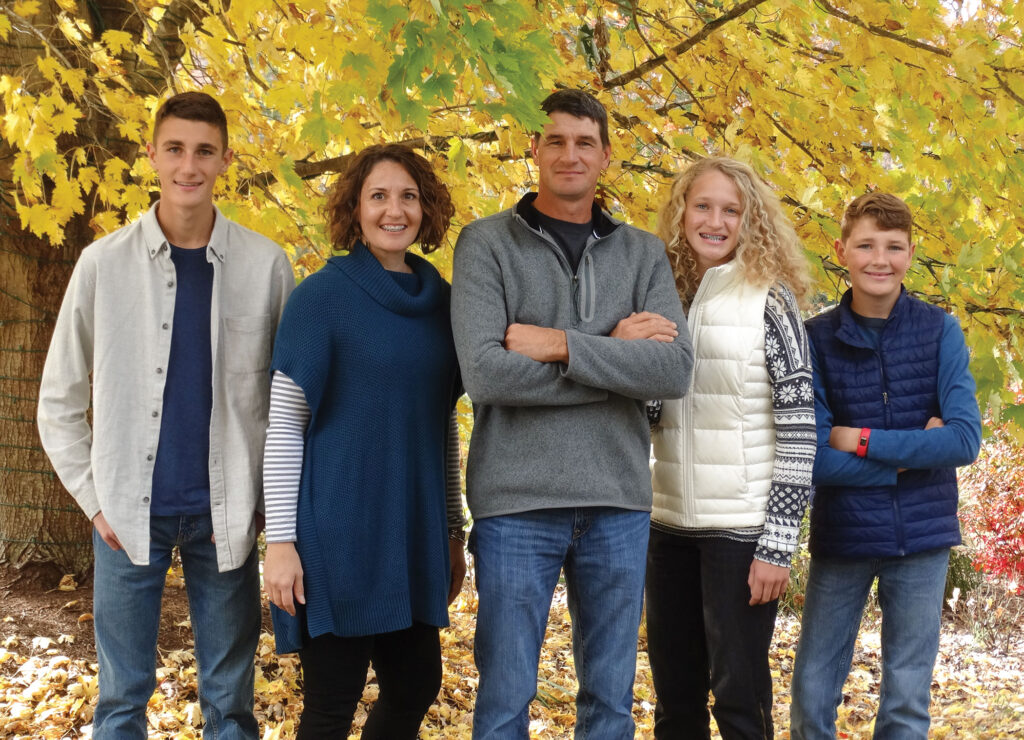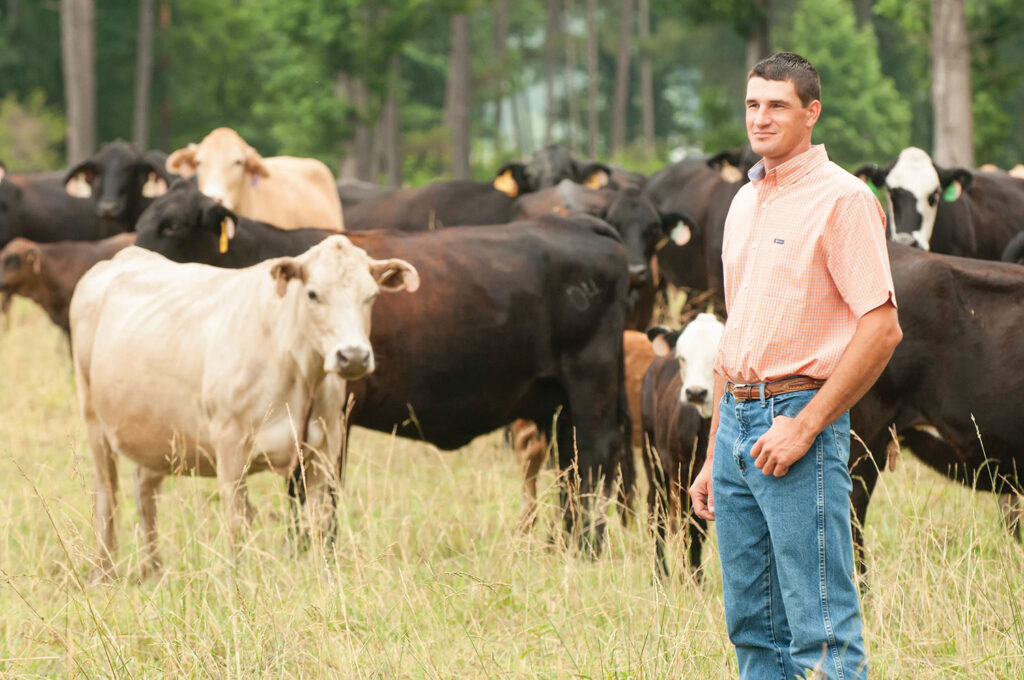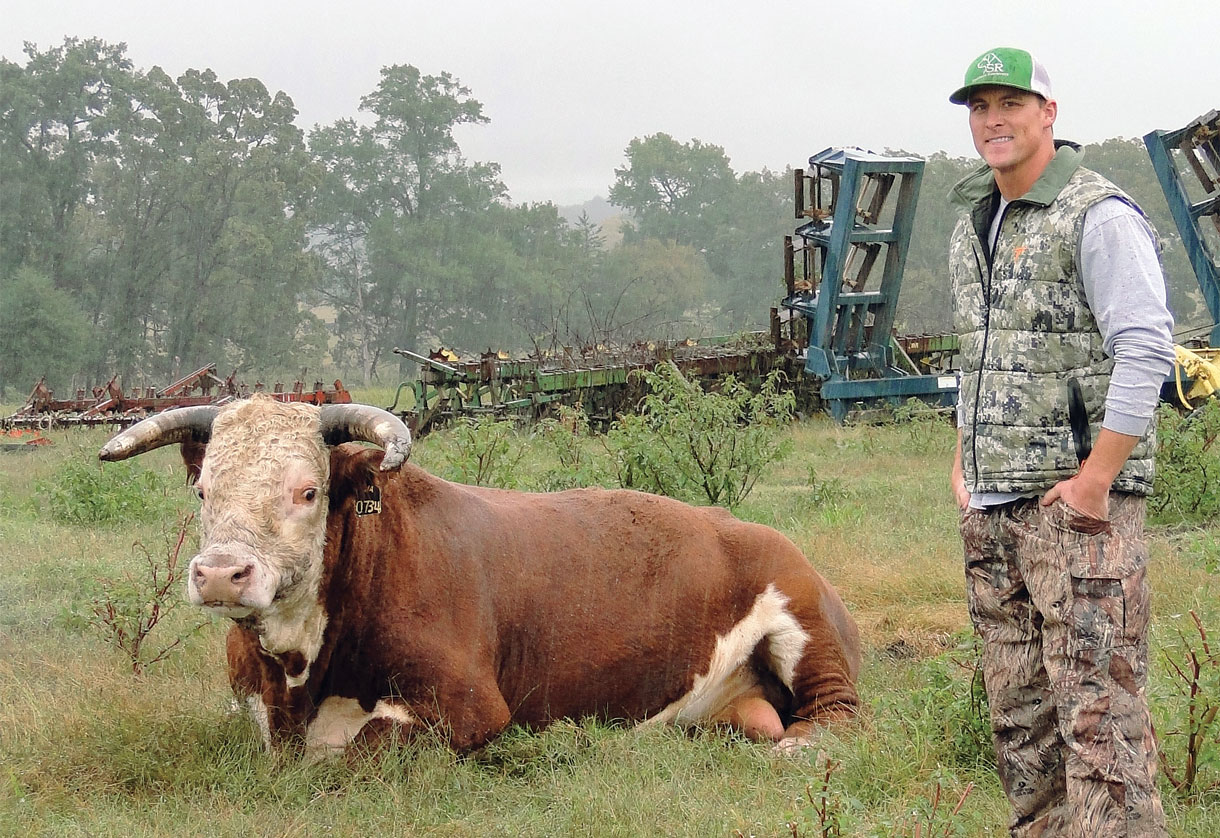
The Hoien family started their own cattle and beef operation in 2008
ATKINS, ARK. – Like many kids who grew up in the Midwest and south, Matt Hoien had a keen interest in animals. From his days in the 4-H and FFA, he knew as he got older that was the direction he wanted to steer his life.
However, finding the right occupation was a little tougher than he expected.
“I’ve got a degree in animal science from Abilene Christian University and wanted to work in production agriculture,” Matt said. “And so I didn’t know exactly what that would look like.”
After working at Tyson for two years in its swine operation, Matt decided he would try something different. In 2001, he started working at the Gerald Lindsey farm raising cattle.
“I had raised beef cattle and done a little bit of showing growing up,” Matt said. “So I had some beef cattle as a younger person. And that was something I was ready to try and see how it went.”
The decision to do something different ended up becoming the foundation of Hoiens Farms Beef, which was founded in 2008. Located in Atkins, Ark., Hoien and his wife Rachel run 300 head of cattle on 700 acres of pasture land. According to Matt, the farm produces close 275 to 300 calves a year, which they pre-condition for about 90 days before taking them to market through Joplin Regional Stockyards in Missouri.
They also sell individual cuts direct from the farm, at farmer’s markets and in grocery stores. They even have a deal with the Russellville School District and hope to add to that soon.
“We started a few years ago doing a little bit of the USDA-inspected meat. And so we are selling meat off the farm as well,” Matt said. “That is a very small part of it just because we can’t sell 300 calves a year through that way, but we sell about 30 to 40 animals a year that way. That is something we want to continue and maybe even increase that farm-to-freezer business.”
In the two decades since reintroducing himself to beef cattle, Matt admitted the learning curve was high those first few years.
“There are a lot of varied ways of doing things. Everybody has their own way,” Matt said. “There are some things everybody does or that are similar. But there’s also a lot of opportunities to do something different or try something different.”
Luckily for Matt, he is not one to shy away from either taking strategies he has picked up from others.
“When I was working for the farm before I leased it, the owner was very interested in using Arkansas Extension. He was open to learning things himself and having us learn things,” Matt said. “I continued with that on anywhere from grazing and the grasses we grow to the type of cattle we have and selecting heifers. So a lot of those things we have got help through the extension and seminars. It is a lot of hours. It is a lot of work.

“There’s a lot of different things that go into raising cattle,” Matt continued. “It’s not just turn them out in the field and let them go.”
Matt has a group of cows that calve in the fall and a group in the spring. So they have two separate times that they sell calves. That also means Matt never has to worry about not being busy.
“There’s a lot to it from the machinery and equipment repairs to managing finances and buying supplies to of course making hay and vaccinations,” Matt said. “So there are a lot of different things that go into raising cattle and that’s one of the things that does make it enjoyable to me. Everything has a season and seems like by the time I’m really kind of getting tired of one season, it’s time to start something else and they are all busy and they’re all got their own challenges, but that does make it enjoyable.”
Matt does find much of his time does go directly to one particular task — learning about grazing.
“I guess just for me, extending the grazing season, it’s something I’ve really worked on and trying to,” Matt said. “I always enjoy putting up hay, but after about the first cutting the enjoyment is gone and it’s a job. And I usually do three to four cuttings. So the longer I can graze, the less hay I have to feed, the less I have to make, which is not just good for me as far as labor, but equipment also. I think that is the main thing that I have focused on and tried to learn the most about.”
One of the first major decisions the Hoiens had to make once they took over the running the farm was what to feed the cattle. While he knew the trend taking place was to go organic, he didn’t feel that was the best path for his cattle.
“When I worked here and when we took it over, it was a commercial operation and it was a cow/calf too. We usually sold the calves about 500 pounds and off the cow,” Matt said. “So I didn’t change a whole lot of that. We want to do as much grazing as possible. We want to use as little antibiotics as possible, so that’s something we strive to do. But at the same time, for us, part of taking care of the animals is, there are times you have to feed them something other than just grass. And there are times when they need antibiotics because they are sick or something. We are a commercial operation that just strives to do as much grazing as possible probably.”
When Matt looks at the future, he doesn’t necessarily see it as a legacy he can pass down through his family because they are leasing all 700 acres.
“I don’t know how long that’ll continue,” Matt said. “I don’t see that changing right now, but that’s the thing on this. It’s not necessarily a family farm, it’s a family business because we don’t own the land.”
Matt would one day like to buy his own land, but that dream seems harder to imagine every year that goes by.
“I don’t know that it could be on this scale and that’s OK,” Matt said. “But you know, it is hard to get started or to buy a large piece of land anymore and, the cattle and the equipment and everything. But if that opportunity came available, I would sure be interested in that. I guess 20, 30 years ago, things probably seemed high and it seemed difficult to do that, but I do think it’s probably more difficult now than what it was then.”







